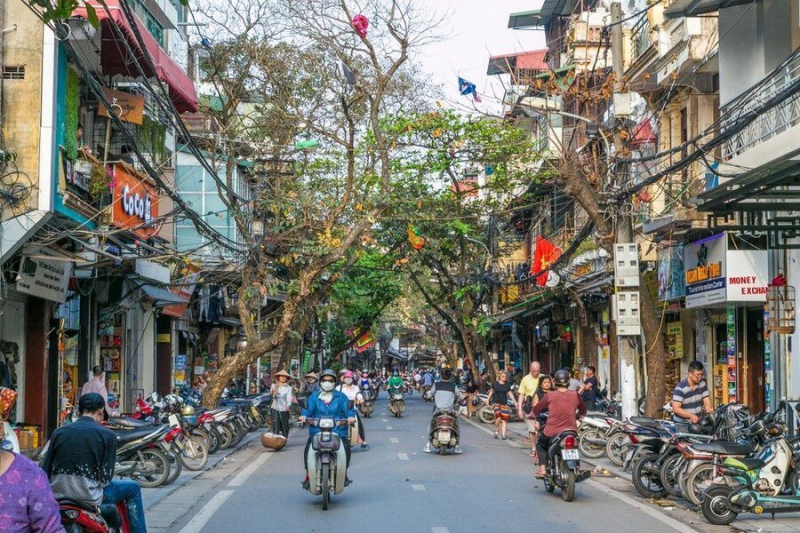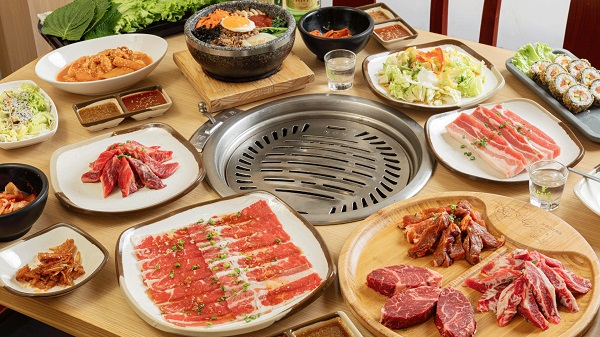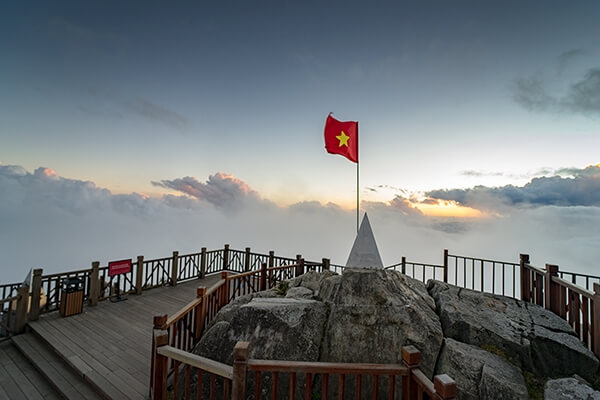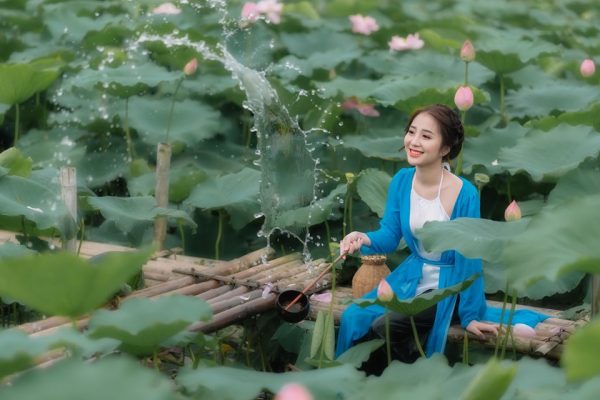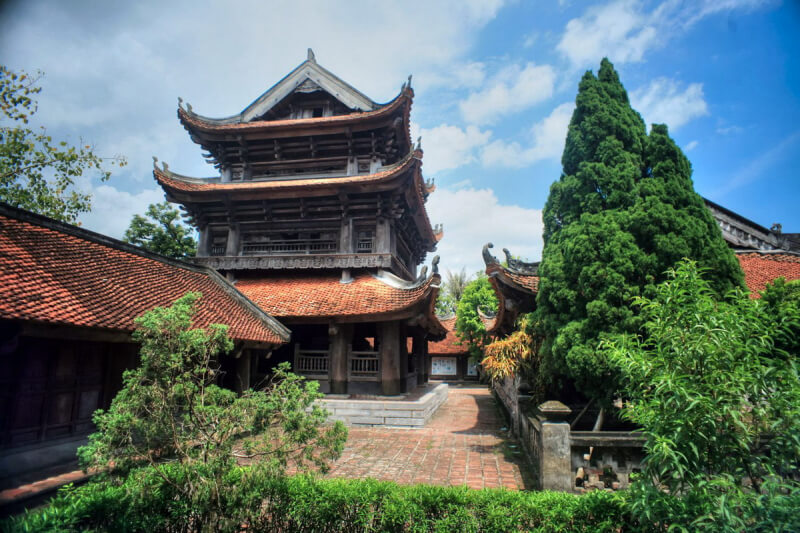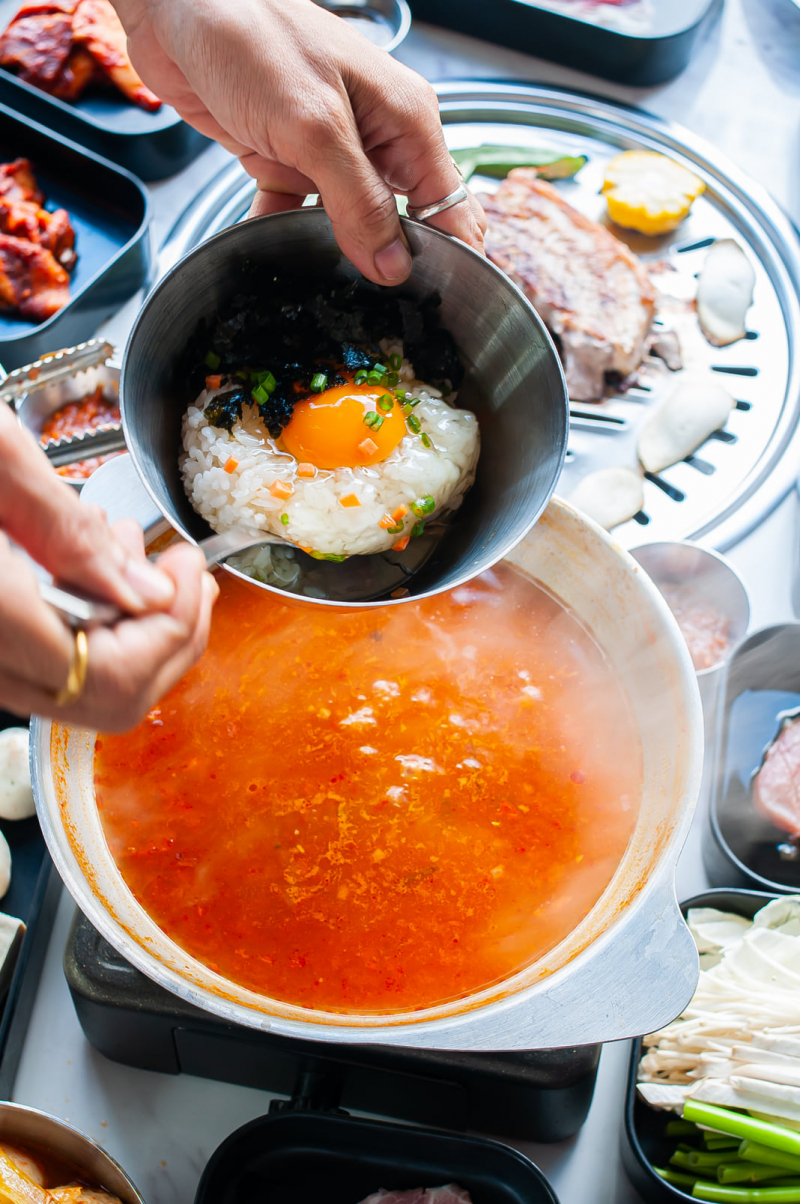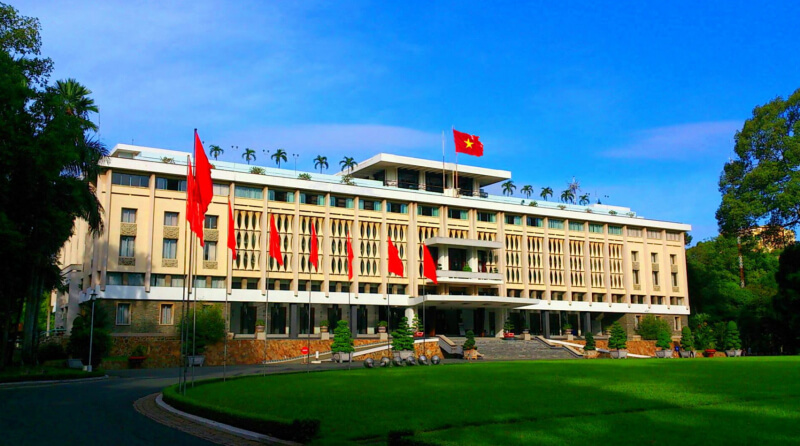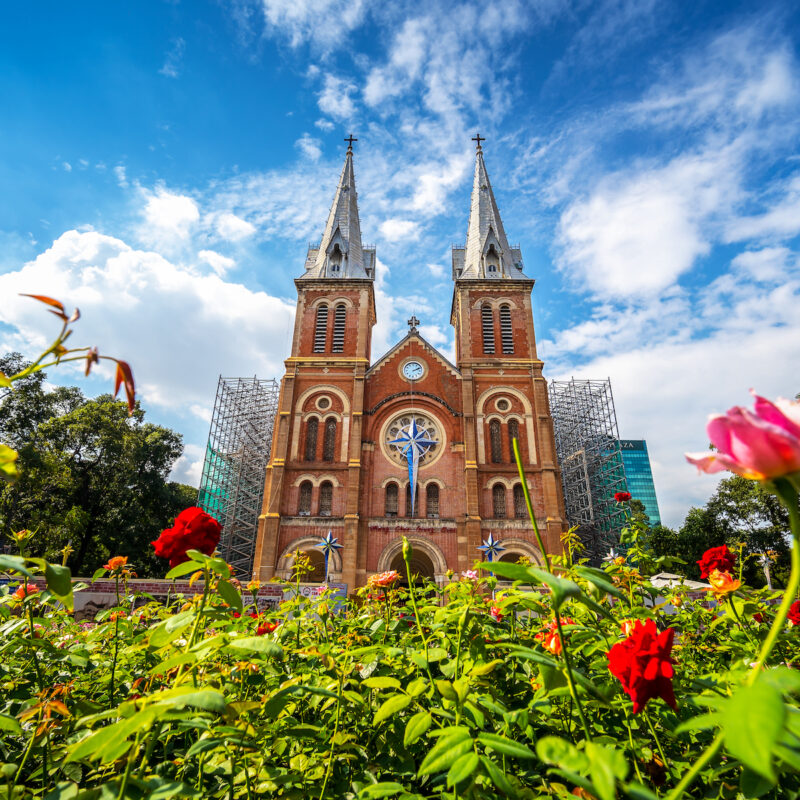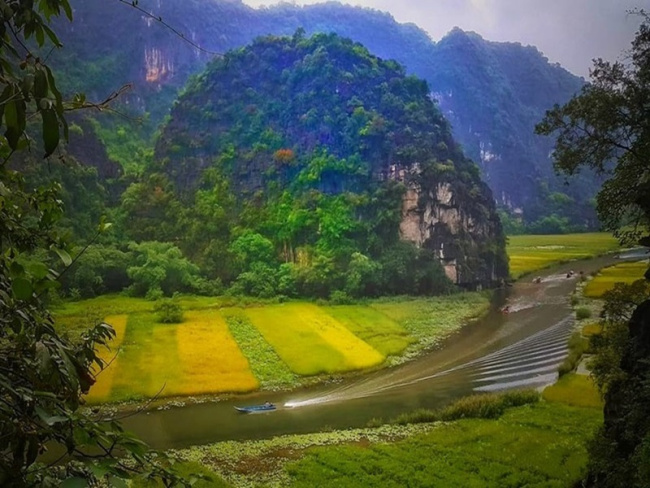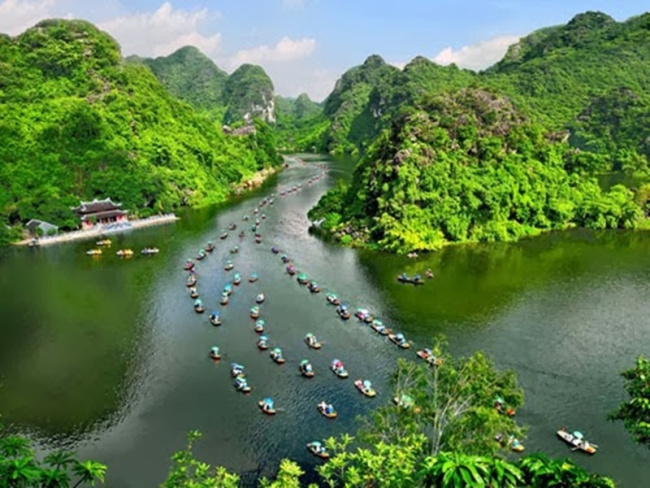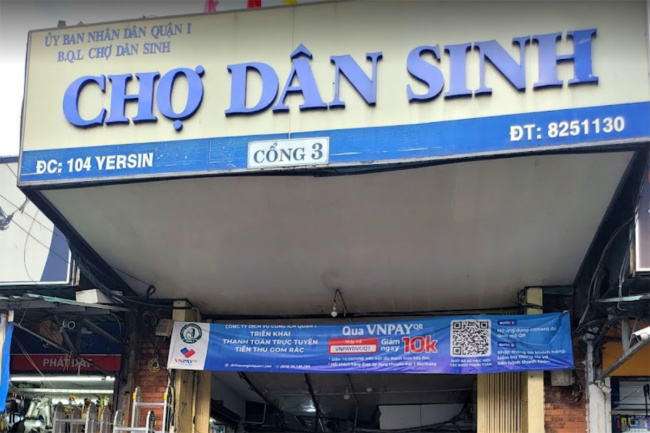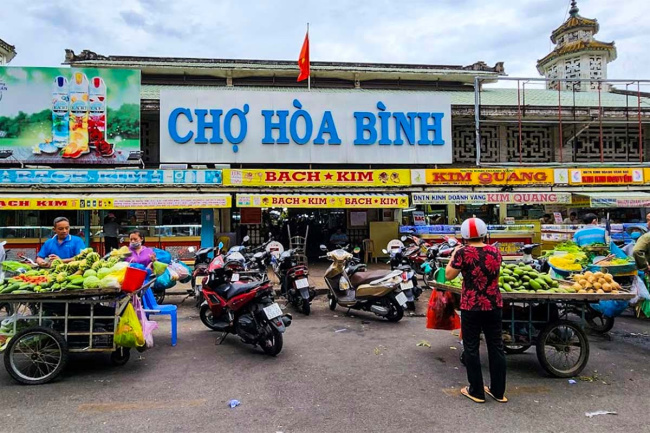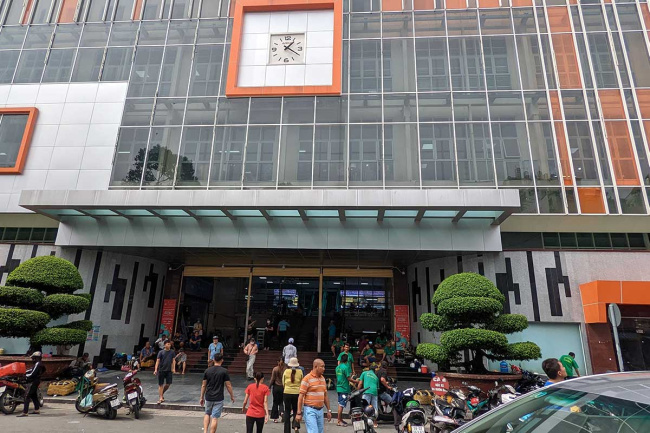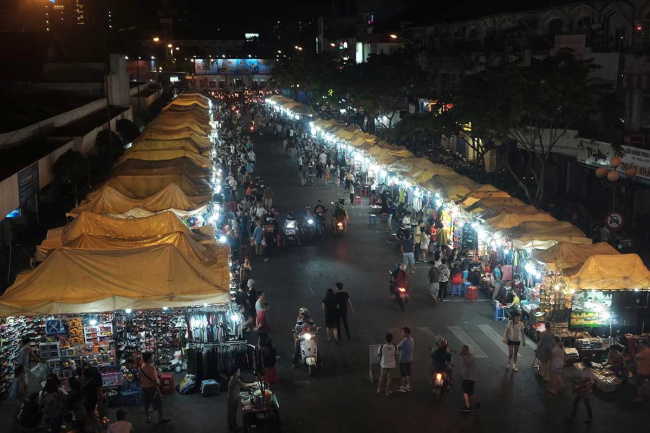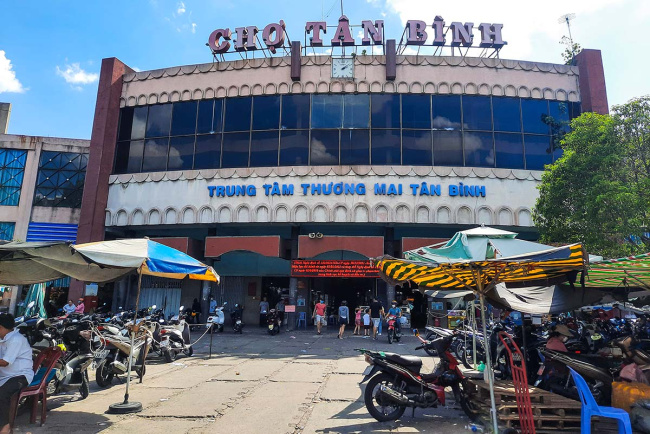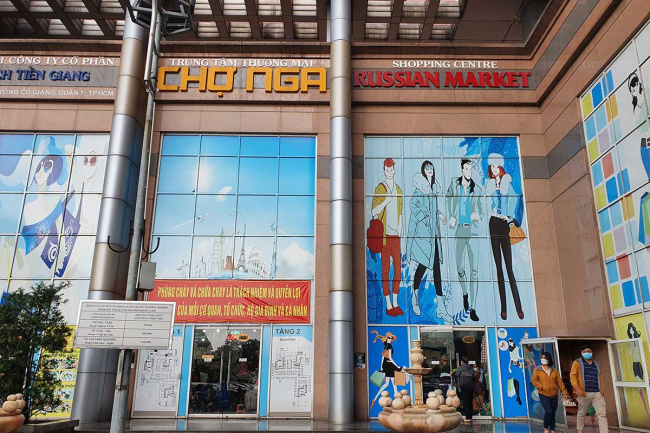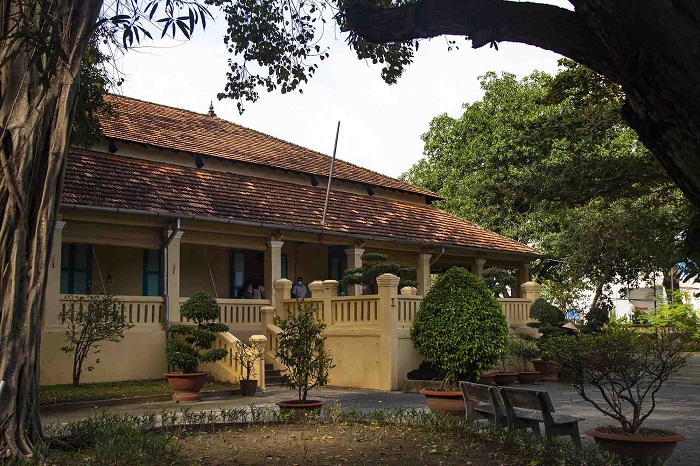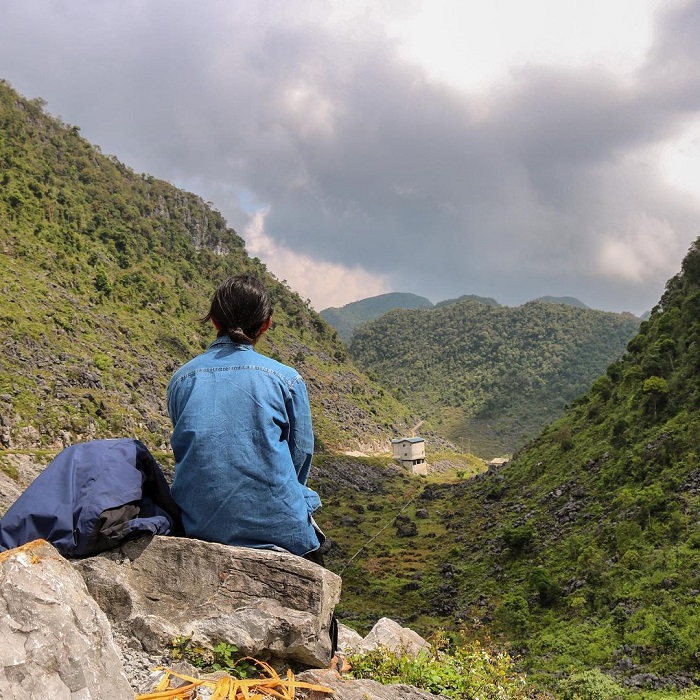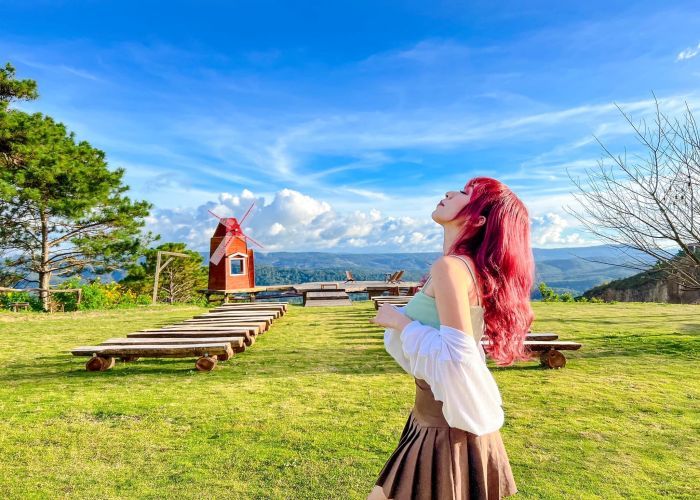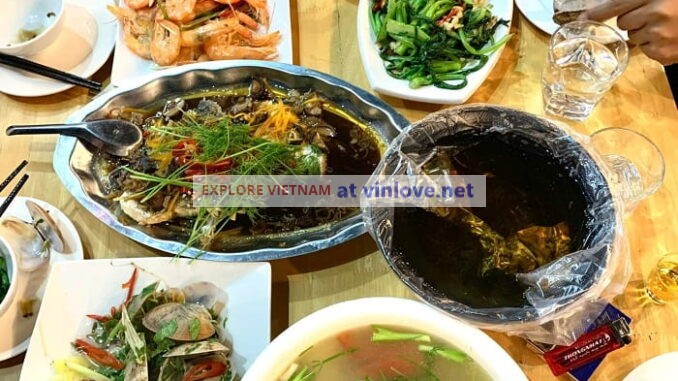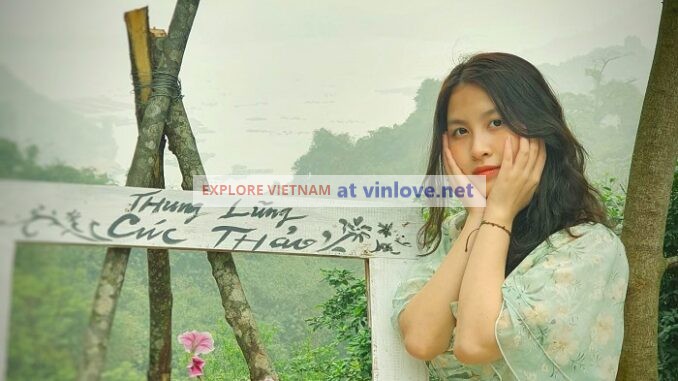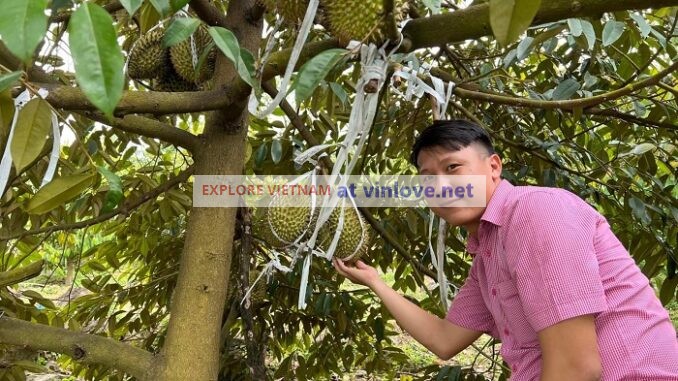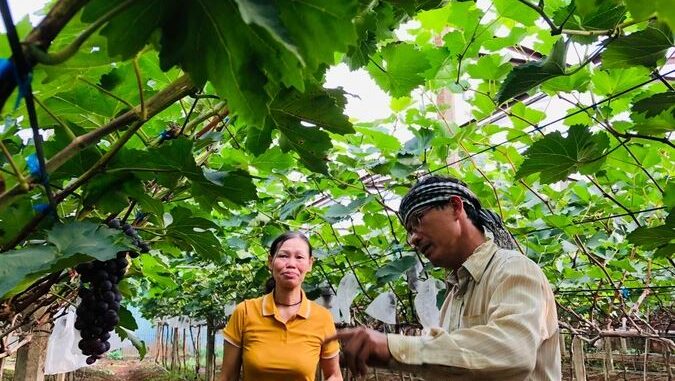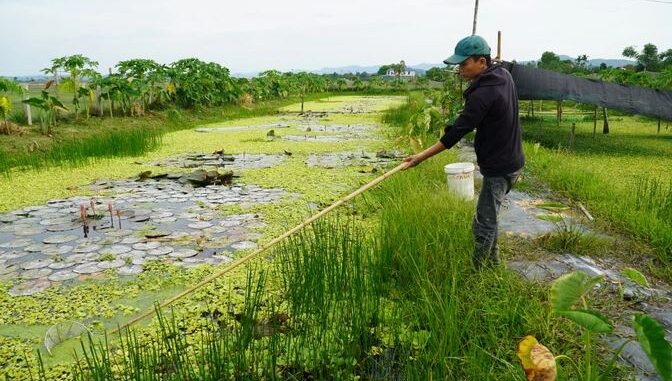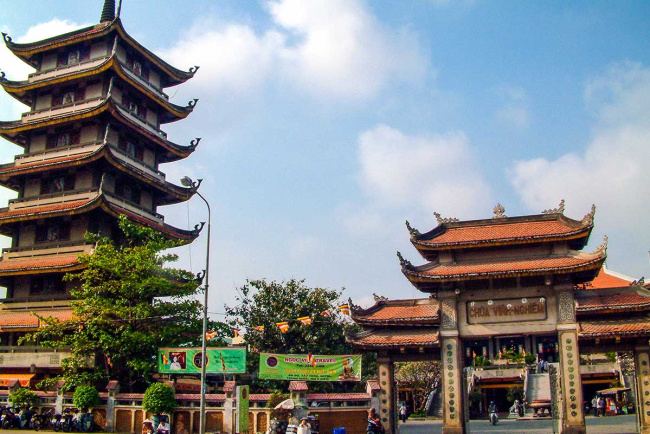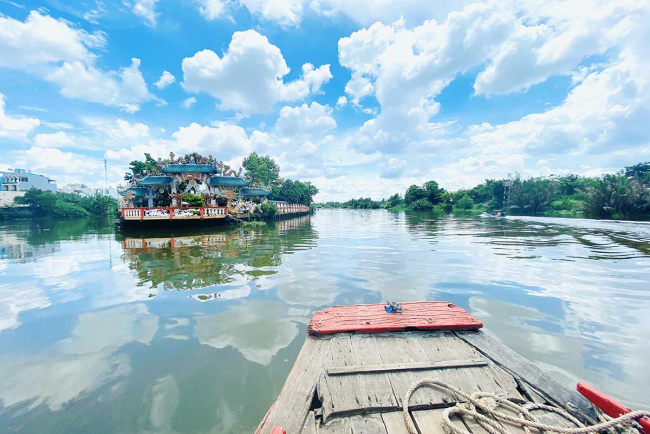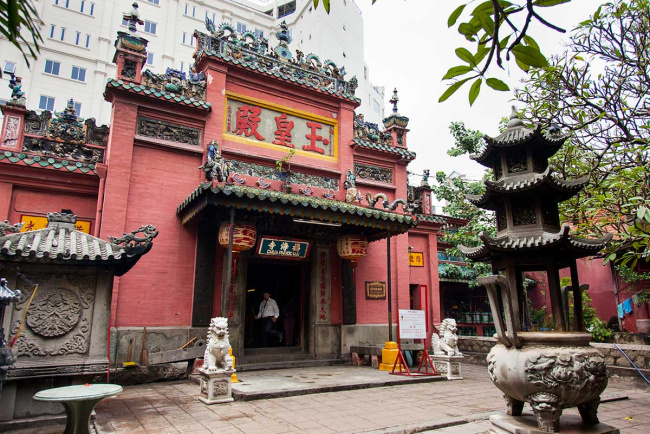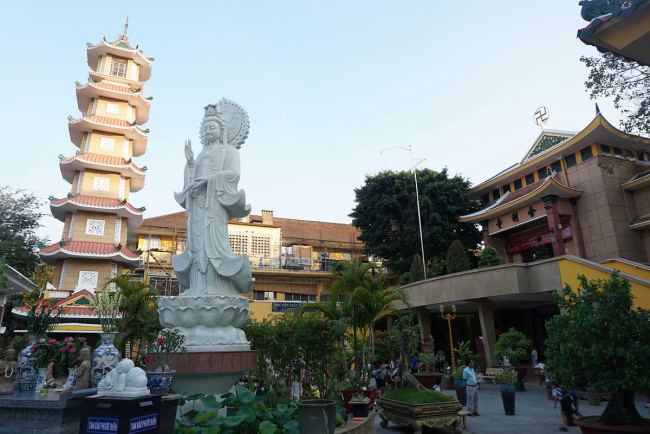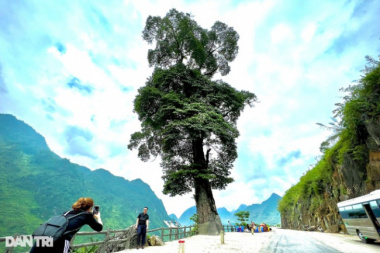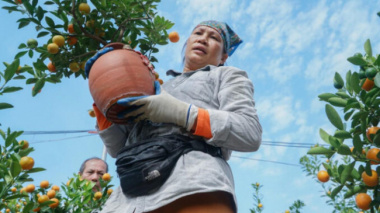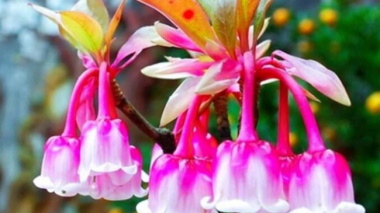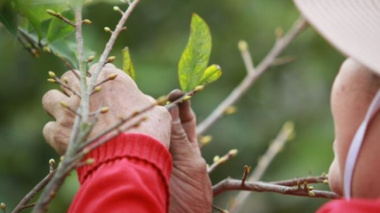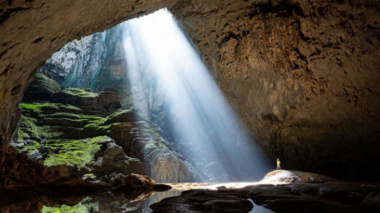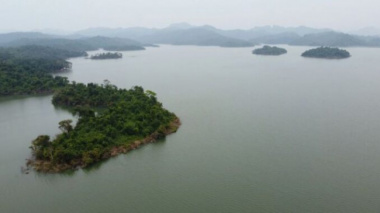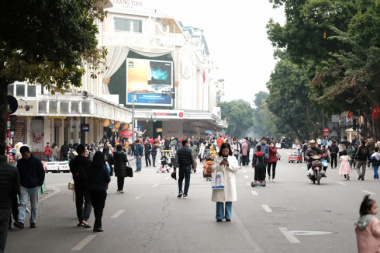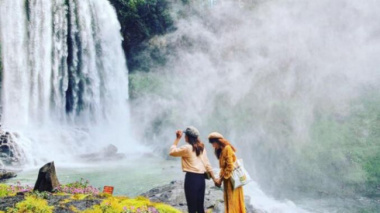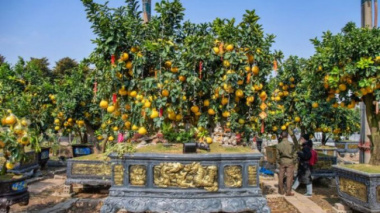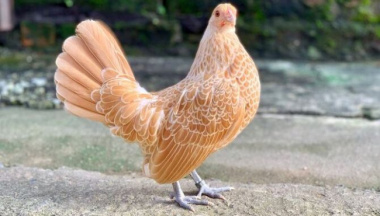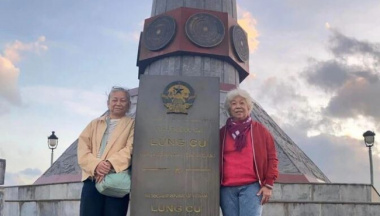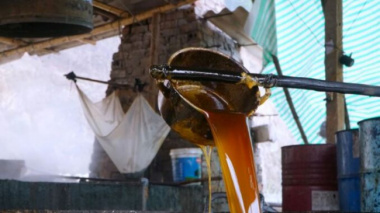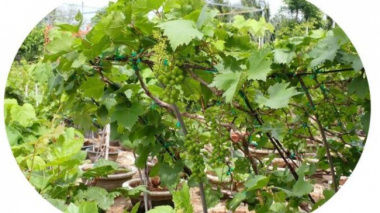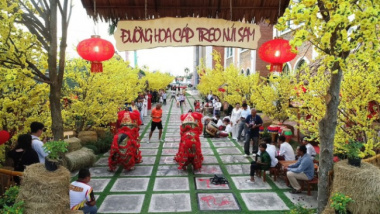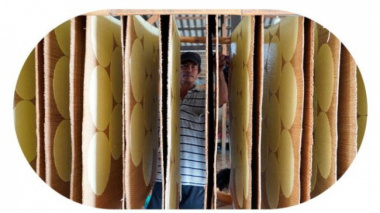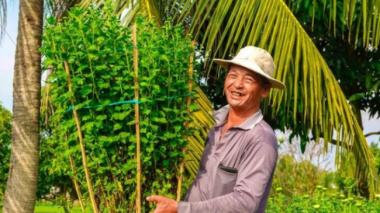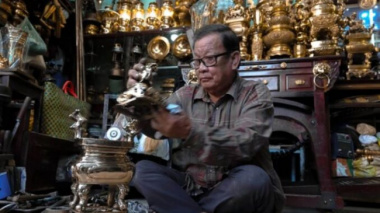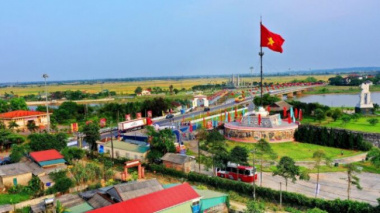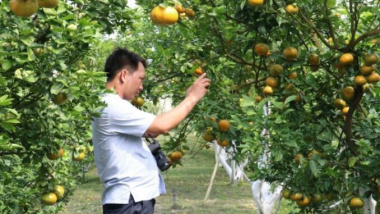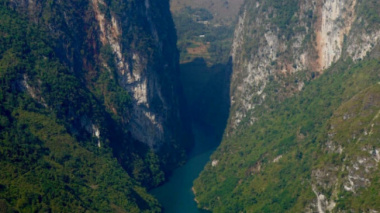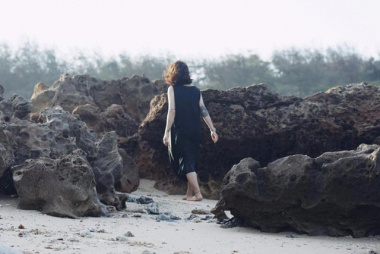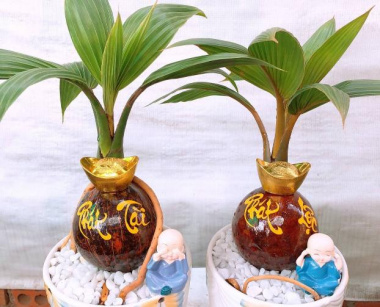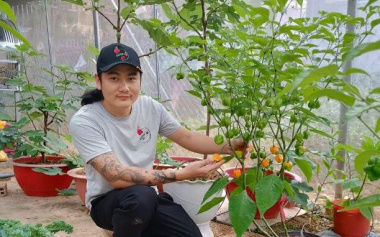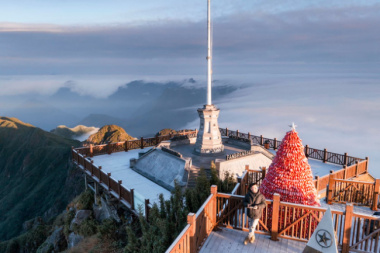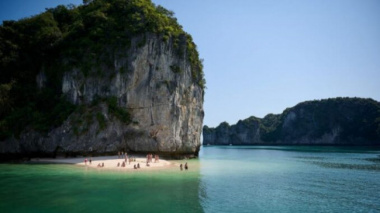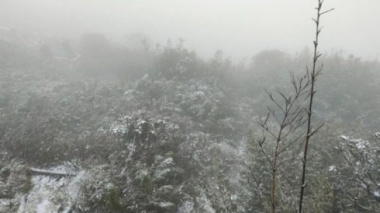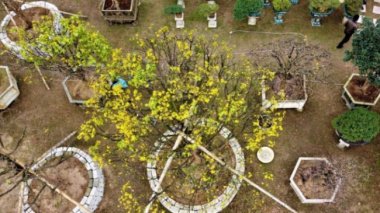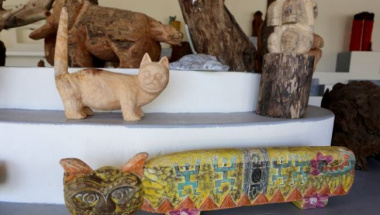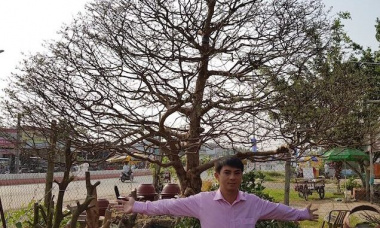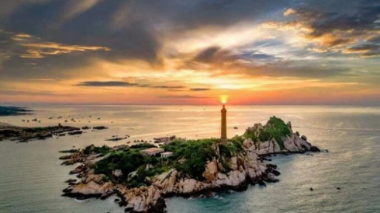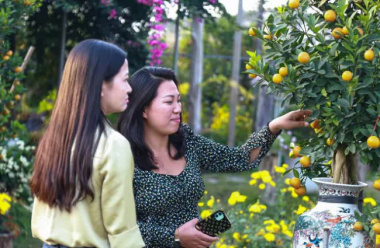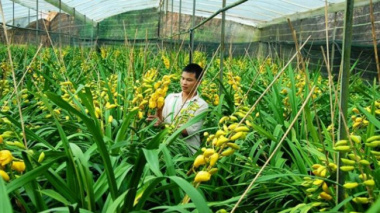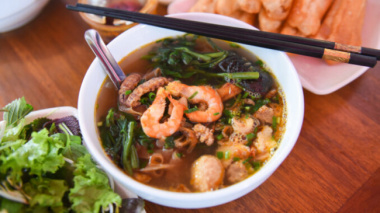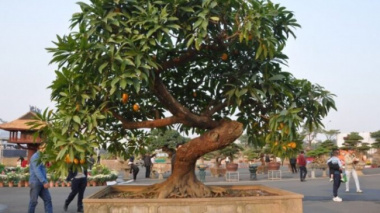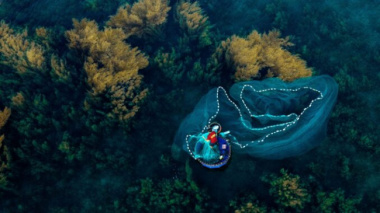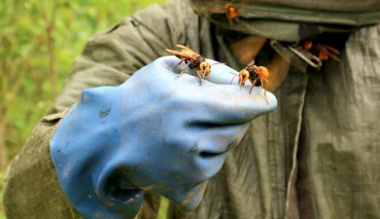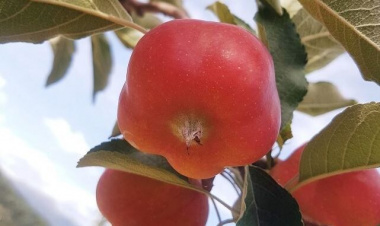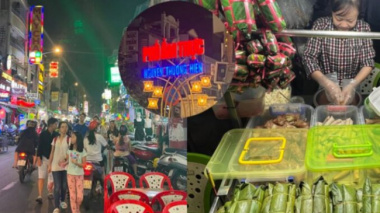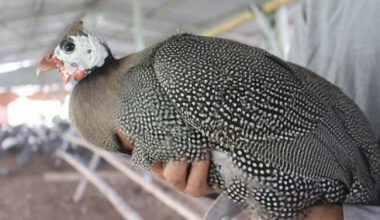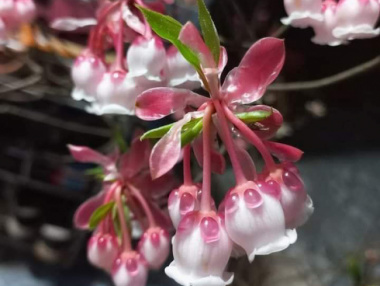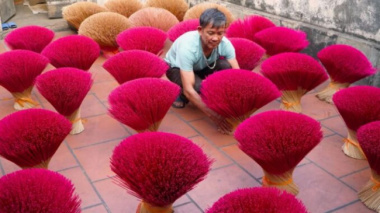Du Gia National Park – Ha Giang Province
- National Park in Northern Vietnam
- History of Du Gia
- Activities at Dua Gia
- Lessons on Culture
- Join a Tour
- Hiking Du Gia
- Plants and Wildlife
- How to Get There
- When to Visit
Merging the Du Gia Nature Reserve and Khau Ca Species and Habitat Conservation Area, Du Gia National Park was established to protect northern Vietnam’s unique forest ecosystems. This national park has stabilized local living conditions through its conservation and eco-tourism efforts.
The balance between humans and nature has made Du Gia one of the most breathtaking parks in Vietnam. Sometimes called a “fairy village”, the park’s stunning landscape will captivate your soul and mesmerize your eyes.
National Park in Northern Vietnam
Du Gia National Park is located in the Ha Giang region of Vietnam. The park is within Vietnam’s far northern area, close to the border with China. Spanning over three provinces, Du Gia protects more than 37,000 acres of land.
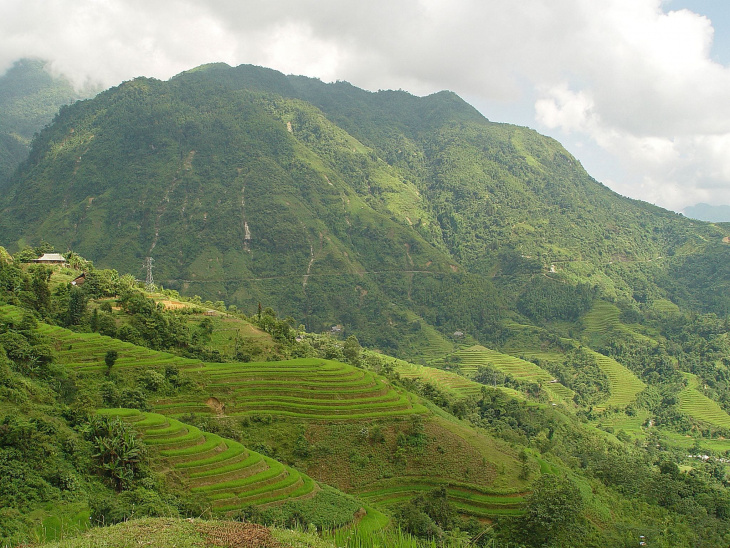
Overlooking a valley driving through the Ha Giang Province. Photo by: Peter Garnhum.
Ha Giang City is the most populous urban area near the park. The city acts as a central base for travelers who wish to explore the area’s remote villages. Du Gia, Dam Dam, and Lung Tam are all villages that are within proximity to the national park.
History of Du Gia
In 2015, the national park was formed by merging the land from a nature reserve and conservation area together. When combined, Du Gia National Park protected larges areas of land and numerous local communities. Three communes near the Gam River basin are also protected by Du Gia’s national park title.
By protecting the land, animals, and people, Du Gia gives hope for a brighter future. Boosting tourism and encouraging locals to practice conserving natural resources has helped the park become a must-see destination in Vietnam. New developments are being planned to attract more tourists, so now is the time to see Du Gia National Park before it becomes too crowded.
Activities at Dua Gia
Activities in Dua Gia National Park are focused on connecting travelers to nature and local communities. Visitors can take a hike through the mountains and visit the tranquil villages to learn more about Vietnam. Homestays and guided tours are also popular amongst tourists.
Lessons on Culture
A special way to experience Du Gia National Park is by visiting one of the nearby villages and communes. The activity of staying with locals is so popular that many tours include stops to the park’s nearby villages.
Whether you stop for a meal or spend the night, visiting the communities gives tourists the chance to not only observe but also participate in learning Vietnamese culture. As stated, most tour schedules will include a stop or meal in one of the villages.
Visitors who wish to spend more time with the local people should arrange a homestay. Most homestays are longer in duration and allow tourists to live with a local family for a period of time. For budget travelers, homestays are an affordable alternative to staying in a hotel.
Join a Tour
Apart from visiting a local village, many tours to Du Gia National Park include exciting activities like taking short hikes through the park, observing ceremonies, participating in festivals, and visiting the markets.
Booking a tour means that most of your needs will be handled and provided by the tour company. This includes transportation to all the scheduled destinations and, potentially, an overnight stay in one of the villages. Tours are the best way to experience a little bit of everything that the park has to offer.

A traditional home looking over rice terraces in Du Gia. Photo by: Program Monkey.
Hiking Du Gia
Not all visitors find traveling in a group to be fun. For adventurers who want to break away from the crowds, hiking in Du Gia is an excellent way to venture further into the park’s remote areas.
There are numerous trails in Du Gia National Park, and they take you through the valleys, past agriculture fields, into villages, and up the mountains. Most trails are clearly marked and wouldn’t require a local guide. However, travelers who want to head to the deepest parts of the park might want to consider hiring a local guide.
Unlike tour groups, some guides are willing to work for a private group or solo travelers to help them navigate through the park’s terrain. Villages are always friendly whether you are a part of a tour group or alone.
Anyone can hike to the village and inquire about spending an afternoon with the local people. Hikes that take you further into the park, and away from civilization, would give travelers the opportunity to observe the park’s wild inhabitants including rare plant and animal species.
Plants and Wildlife
There are three types of forests in Du Gia National Park: evergreen, limestone, and tropical. Evergreen and limestone forests have higher altitudes and are a part of the hills and mountains above the villages, while at lower elevations, visitors can find the tropical rainforests. All three forests are home to Du Gia’s special and endangered species.
Rare plants in Du Gia are abundant because of the three types of forest terrain. From red pine to brown lilac flowers, visitors will see an array of verdant flora. Many plants within the national park are also culturally significant as they have become ingredients in traditional medicine or ceremonies.
While there are multiple endangered species of animals in Du Gia, the park is most famous for its Tonkin snub-nosed monkeys. These monkeys are one of the most endangered species of primates on Earth and they only exist in small pockets of forests in northern Vietnam.
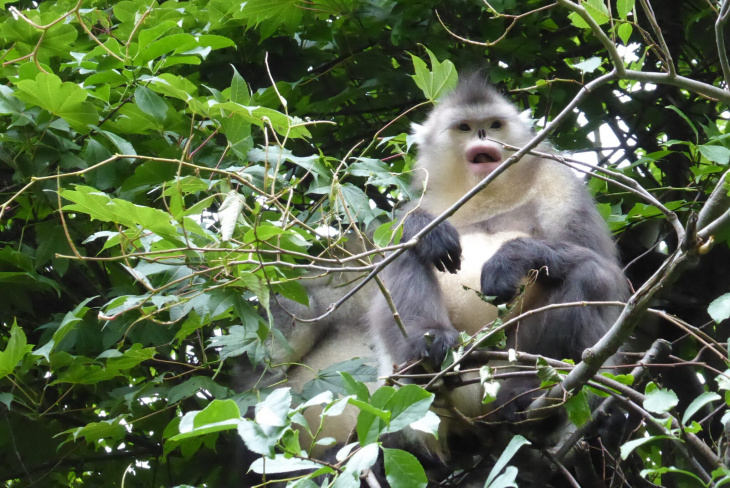
A rare Tonkin snub-nosed monkey. Photo by: Tim Kelly.
With an estimated 200 left in the wild, Du Gia National Park has become a central habitat for these rare primates. Protecting the monkeys is important as ever and the establishment of the national park has helped prevent poaching and habitat destruction.
How to Get There
Du Gia National Park is in the far northern region of Vietnam, making it more difficult to access. The only option for travelers looking to visit the area is by road, which is known for being quite bumpy. Poor roadway conditions are often due to the excess number of mining trucks that transport precious metals down to the city.
Driving from Hanoi to Ha Giang City is one of the easiest ways to access the park and can take up to 10 hours to reach, depending on the road you choose and traffic. Once in Ha Giang City, travelers can book a tour or arrange for transportation to the park. The drive from Ha Giang City to Du Gia National Park takes about 3 hours.
Another option for travelers is to go from Ha Giang City to Bac Me. Bac Me is a commune just north of Ha Giang City and a great place to set up a homestay. It is closer to the national park, as well as the nearby communes and villages.
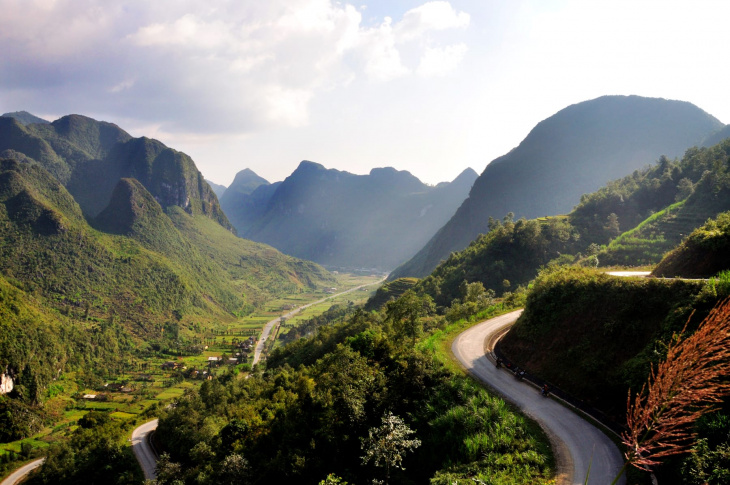
Driving through Ha Giang. Photo: Nhi Dang
While it can be intimidating having to navigate remote areas of Vietnam, many travelers can ease their stress by hiring a private driver or taking a local bus. Although more expensive, private drivers can take you exactly where you need to go without making stops along the way.
For budget travelers, there are public buses that leave from Hanoi to Ha Giang City daily. Once in Ha Giang City, travelers can board a bus to Bac Me.
When to Visit
Du Gia National Park is beautiful in any season. From January to March, the weather in Du Gia is dry. Springtime flowers are emerging, and the number of tourists increases as people flock to see the new blooms. Anyone visiting during these months should pack warm clothes as the temperatures are quite low.
From April to May the weather warms up and there is some rainfall. These months are at the end of the dry season, so travelers can still visit while the weather remains cooler. April and May are also the months just before the tourist crowds increase for the summer.

Scenic view in Ha Giang. Photo: TROPICAL TOURS VIETNAM
June, July, and August are the rainiest and hottest months in Du Gia, although the rain doesn’t deter many travelers because these summer months are the park’s most popular. To escape these conditions, many travelers will visit during September or October.
September and October are cooler and have less rain than the summer months. With a refreshing atmosphere, this is the time that the rice is getting ready to be harvested. At the end of the year, November and December bring cooler temperatures and dry weather.
November is the best time to see the park’s beautiful flowers while December is perfect for hiking. Just like January and February, temperatures can be very low during the final months of the year, so travelers should pack warm clothes.
While it takes a lot of effort to travel to northern Vietnam, those who dare venture to Du Gia National Park won’t be disappointed with their reward.
After passing all the bumpy roads, picturesque villages and epic views await travelers in Du Gia National Park. With rare plants and even more special animals, the park is an unforgettable experience. So, don’t be afraid to venture into the unknown, everyone is welcome at Du Gia National Park!
Details
Address: Đường Thượng, Yên Minh District, Ha Giang province, Vietnam
Season: Year-round
Established: 2015
Đăng bởi: Châu Nguyễn


